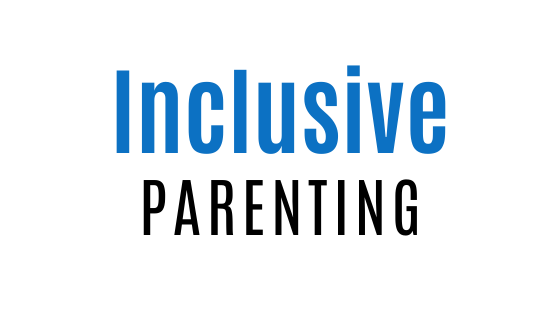Post in collaboration with K-12 Inclusion
As parents to three kids, two of whom have a range of diagnoses between them, accessing inclusive education has always been a priority for us. We’ve always believed that our kids, regardless of disability or diagnosis, have the same right as their peers to receive a quality education.
Even in the early days, when we weren’t sure our son would ever be able to attend mainstream school, we made sure he attended a standard long daycare centre, in addition to his special education pre-school. We worked hard to obtain the funding, support and resources he needed to become an active, engaged and valued student, alongside his peers.
Like every parent, we wanted him to participate in his local community. We wanted him to share in experiences with kids of his own age. We wanted him to learn from others and not be segregated because of his diagnoses. We wanted him to belong and find his place in the world. We wanted him to be included.
Isn’t that what every parent wants for their child?
Feeling a sense of belonging, value and worth matters to all of us. We all yearn for community and to find our place as a valued member of a team, workplace, class, neighbourhood or family.
That’s why inclusion matters. That’s why it’s so important for all kids to experience a truly inclusive education from an early age.
Benefits of inclusion
My kids have benefited in so many ways from an inclusive education. Being a part of their local high school, as well as being accepted into selective classes based on their own merits, has boosted their confidence, increased their self-esteem and made them eager to learn.
They’ve made a variety of friends, been encouraged to participate in activities they would never otherwise have done, been pushed academically and creatively and have been given the chance to demonstrate their strengths and abilities on their own terms. They are valued, engaged and included – as all students should be.
Despite many claims to the contrary, inclusion has benefits for mainstream students as well. They have the chance to interact, support and learn from students of different abilities. They get to learn compassion, kindness and tolerance from an early age. They benefit from differentiated instruction, leading to better academic results. More importantly, they gain social skills, patience, empathy, and an appreciation of difference in an inclusive setting.
Inclusion also benefits teachers, giving them the chance to develop innovative ways to teach that are beneficial for all students in their class. There are benefits for parents and the school community too. Inclusion increases acceptance of students with disabilities and provides opportunities to talk about difference and inclusion with kids and the wider community. It can also lead to greater parent involvement in school activities and, ultimately, help build a stronger school community.
It’s clear that inclusion matters and that it benefits everyone.
Inclusion in action
Every child deserves to feel included. We can work together – parents, students, teachers and schools – to foster inclusion and ensure that everyone feels a sense of belonging right through their education journey.
It’s important that we help the next generation, the leaders of tomorrow, grow up appreciating the benefits of inclusion now. Imagine a future, where difference is appreciated, ability in all its forms is valued and disability is no longer viewed in a negative way.
That future is possible. And it starts with us, showing our kids inclusion in action.
Our kids can lead the way
The K-12 Inclusion Challenge is working with school-aged children to raise awareness of disability and support and promote practical solutions to the inclusion of kids with disability in schools. Students and schools are invited to submit an idea for promoting inclusion, focusing on 3 key areas – include, enable and embrace.
Include means students belong and have equal access and opportunity to participate in all school activities, regardless of physical, cognitive or social ability.
Enable means students are empowered to reach their full potential, receiving all the support they need to develop their own personality, talents and strengths.
Embrace means diversity is acknowledged, respected and viewed as a resource for learning, growth and change.
How to win up to $1500 for your school!
- Come up with an idea to improve inclusion in your school
- Develop a 1 page summary of your inclusion idea
- Film a short video of your school.
Entries are open to all school-aged children across Australia and everyone is encouraged to participate and work together to develop an inclusion solution.
There are 15 prizes on offer for the best inclusion ideas, up to the value of $1500. This prize can be used in the classroom, across the school or can be put toward the winning inclusion idea.
To get you started, check out the helpful resources available on the K-12 Inclusion Challenge site and think about what you can do to promote inclusion in your school.

Inclusion matters. It’s up to us to support the next generation and ensure inclusive education is available to every student, regardless of diagnosis or disability. Every child deserves to belong, be included and feel valued. This is your chance to help your kids make this happen.
Disclaimer: I received monetary compensation for this post, however, all experiences, views and opinions shared are 100% my own. This is a cause close to my heart and I wholeheartedly support every effort to increase inclusion in our schools!







Wonderful post. It’s so important that kids feel a sense of belonging.
100% with you here. Everyone needs support, to be challenged and included.
Well-done and I hope more do take up the challenge. Will share on my facebook page too. Thank you! Denyse #teamIBOT
Great to see this initiative.
Thank you for joining #lifethisweek. Next week’s optional prompt is “I Want This”. Denyse
This is a great initiative and such an important one. Thank you for sharing this x